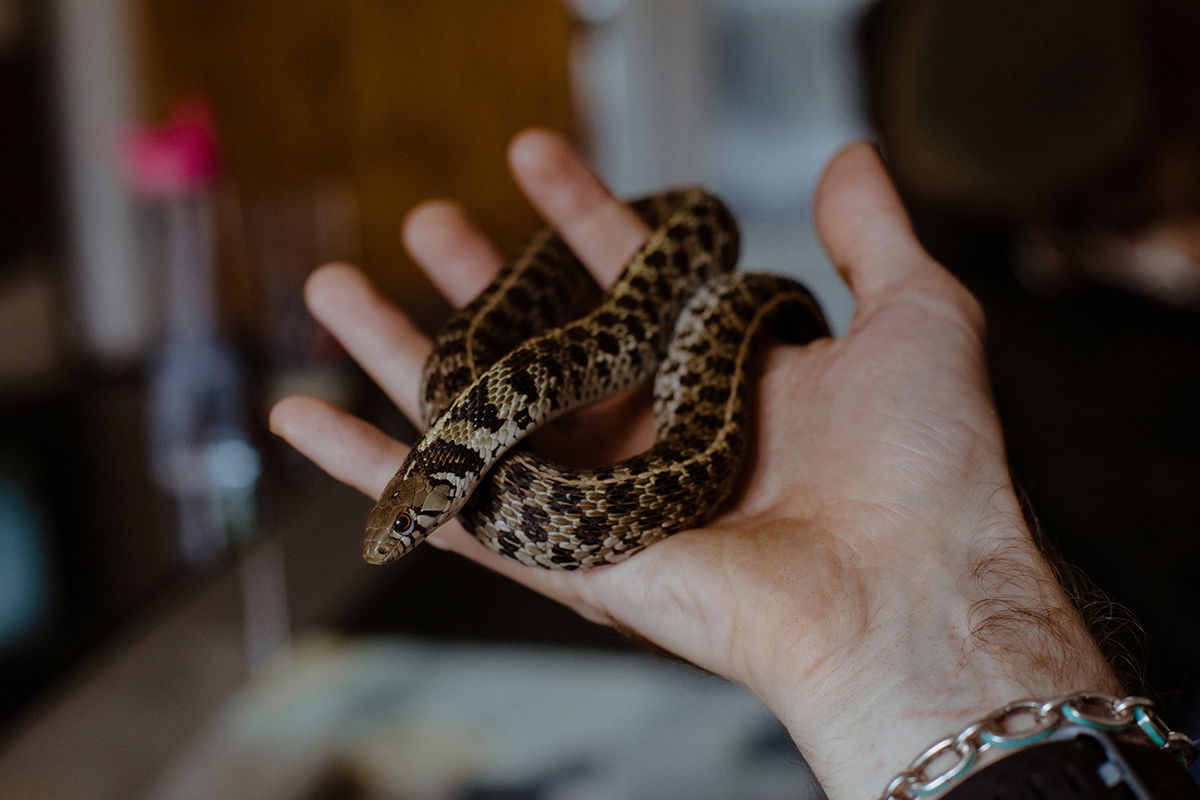

If there’s one creature that could give bears a run for their money as the most feared and misunderstood animal in all of the great outdoors, it’s a snake. Horror stories of rattlesnake bites, movies about deadly encounters, well-meaning adults who instill fear in us at a young age, and possibly even our own evolutionary biases all add up and result in alarm and panic whenever the thought of a scaled, legless reptile crosses our minds (called ophidiophobia, if you want to put a label on it).
But snakes in North America play an important role in the environments they live in, including acting as prey for larger mammals and birds, predators for smaller creatures and pests, and, in general, being an important part of a biodiverse ecosystem. Which is why it’s a goal of William Hayes, professor of biology at Loma Linda University in California, to dispel the many fallacies surrounding one of his favorite wild animals. He wants to remove the stigmas attached to these under-appreciated animals, starting with busting these commonly believed myths about snakes.
MYTH 1: Snakes are poisonous.

While less of a myth and more of a misclassification, snakes—for the most part—aren’t usually poisonous, they’re venomous. Labeling something as poisonous indicates that when you eat it, inhale it, or your skin comes into contact with a toxin, it makes you sick or kills you. Venomous, on the other hand, means if it injects venom into you via a bite or sting, it can make you sick or kill you. There are a handful of snakes that are toxungenous, like the spitting cobra, that can spray toxins onto your skin, but for the most part, Hayes explains that when talking about being bitten by potentially dangerous or deadly snakes, the term used to describe them is venomous.
MYTH 2: Baby rattlesnakes are more dangerous than adult rattlesnakes.

Perhaps one of the most common myths about snakes is that when it comes to venomous varieties, namely rattlesnakes, babies are more dangerous because their venom is more toxic and they can’t control how much they inject with each bite.
However, the science proves this to be untrue. While Hayes says that drop-for-drop, baby rattlesnake venom can be more toxic in some species, contrary to popular belief, neonates (baby snakes) are able to control how much venom they release. Plus, because they are smaller, they have far less of it. That means that adult rattlesnake bites are more deadly, and the larger the rattlesnake, the more deadly its bite can be.
MYTH 3: Snakes are aggressive.

Like most creatures in the animal kingdom, the term aggressive is a bit misleading. It implies that snakes are on the hunt for humans, eager to strike given any opportunity. In reality, snakes, like other wild animals, are better described as defensive.
“Wild snakes want nothing to do with humans. They fear us. When they see us, their heart rate accelerates and they often remain immobile to avoid attracting our attention,” Hayes states. “If they fear they have been detected, their first instinct is to book it out of the area. If that’s not an option, they may exhibit defensive behavior like raising their head, hissing, vibrating or rattling their tail, and/or false striking. Snakes only bite as a last resort. So as long as you keep your distance, there’s no need to worry about a snake purposely hunting you down—they’re not interested.”
MYTH 4: If you get bitten by a snake, you should suck out the venom or create a tourniquet.

Over the years, a variety of methods have wormed their way into the collective consciousness as ways to treat a venomous snakebite. From cutting across the wound and sucking out the venom, securing a tourniquet above the bite, applying ice, to giving the area a mild electric shock, you’ve probably heard of at least one.
Unfortunately, none of them work, says Hayes. He adds: “The only effective treatment to date is to get to a hospital as quickly as possible following the bite to be given a miracle drug known as antivenom, which neutralizes the myriad toxins present in any given snake’s venom.”
MYTH 5: Venomous snakes can be identified by the shape of their head.

Many of us are taught that venomous snakes can be identified by their triangular heads. And while snakes in the viper family, which include rattlesnakes, copperheads, and cottonmouths, do indeed have very angular heads, elapids, which include the colorful coral snake, usually do not. What’s more, Hayes explains, many harmless species have triangular heads.
The best way to determine whether a snake is venomous, he goes on to say, is to learn about the snakes in your area, including their color patterns and size. Only then can you be certain whether the snake in your path is venomous or not.
Check Your Facts (and Your Bias)

There are plenty of other snake-centric myths that get passed along from hiker to hiker in the great outdoors. The best thing to do when you hear a claim about these important reptiles is to check your facts.
If you hear a “big fish” story about a 10-foot rattlesnake, research will prove that there’s no such thing. Same goes for the rumor that rattlesnakes are adapting to no longer possess rattles, thereby more adeptly evading humans. (There’s no evidence of this in the wild.) And if you’ve heard that there is hybridization between venomous and non-venomous snakes, Hayes says this doesn’t happen.
Instead of believing everything you hear, read research papers, learn facts and identification tips from reputable sources, and don’t let your bias against snakes keep you from appreciating their place in nature and from spending time outdoors. Just make sure to keep your distance, just like you should with any wild animal.










You might want to check your information on treating a snake bite. If I’m remembering correctly the advice in Australia (and admittedly our snakes are a little more venomous than yours)) is compression bandage down the limb from the bite, then back up as far as you can, immobilisation and also seek urgent medical aid.